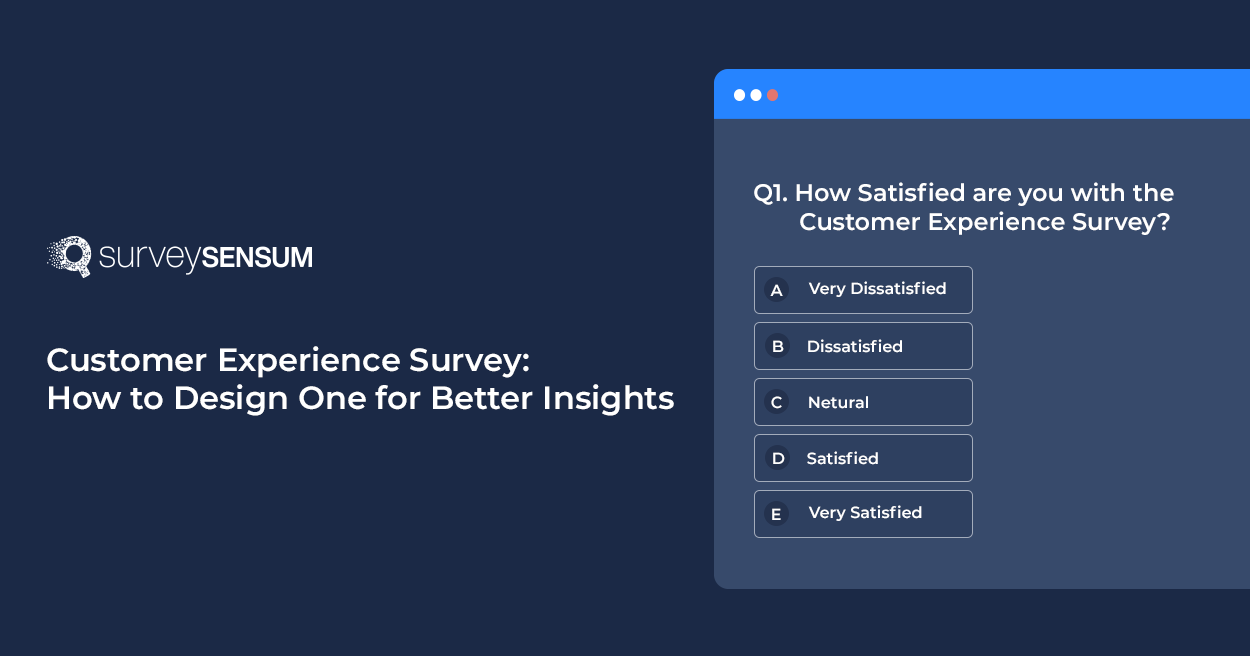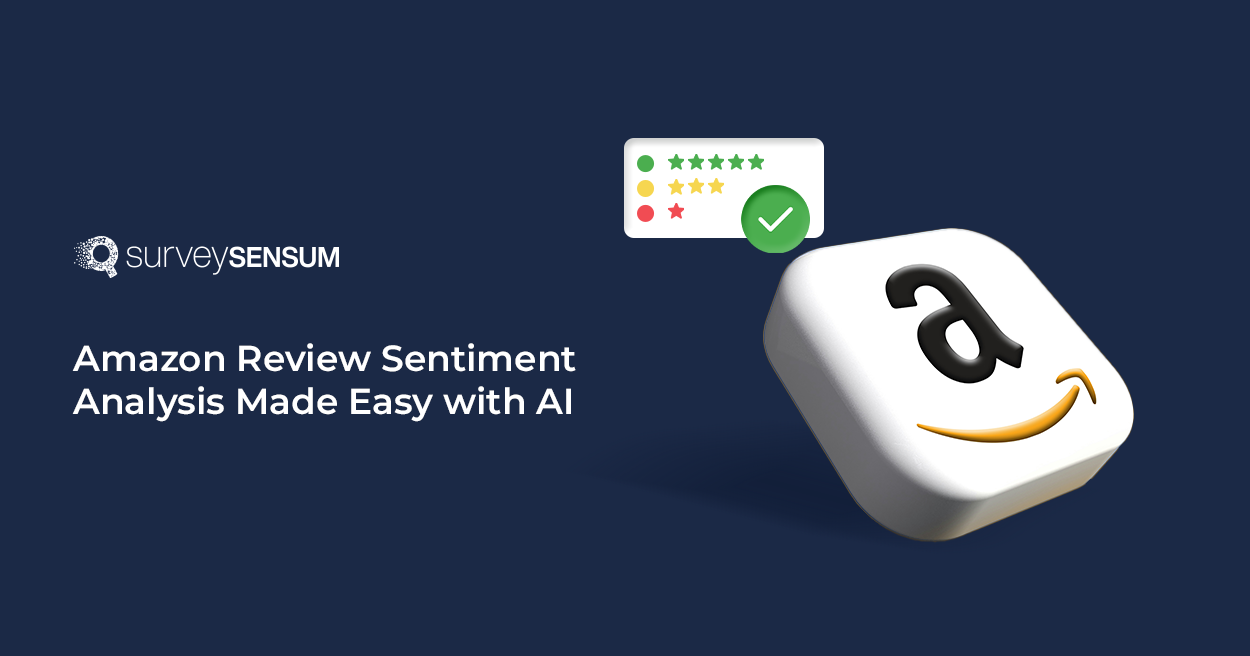


Imagine this: You want to evaluate your delivery experience and that requires sending out customer surveys after every delivery. However, managing this process manually feels overwhelming. So, what’s the solution here to ensure that the process goes on smoothly, every time, without any extra effort?
The answer is survey automation.
Survey automation has transformed the way businesses launch surveys and collect feedback by streamlining the entire process and eliminating the manual effort and human error of scheduling, launching, and managing surveys.
So, let’s understand the importance and process of survey automation to create a more seamless and error-free process.
What Is Survey Automation?
Survey automation refers to the use of automated workflow to streamline the process of creating, launching, and managing surveys. This enables businesses to eliminate manual handling of each step, such as designing surveys, scheduling and sending them out to customers, and sending follow-ups. This automation allows the setting up of pre-defined triggers and schedules for surveys to be launched at the right time.
Survey automation helps businesses eliminate repetitive tasks, save time, lower the risk of human error, and boost efficiency in their feedback strategy. Let’s understand this in detail.
Why Consider Survey Automation?
Implementing automation in survey processes yields many benefits like boosting efficiency, reducing manual work, etc. Here are the key benefits of survey automation.
1. Reduces Manual Work: Automation eliminates repetitive tasks like survey creation, scheduling, and distribution with a robust survey builder. This frees up your team to focus on more strategic activities, such as analyzing the data and implementing improvements.
2. Gathers Feedback at Key Moments: Surveys can be triggered based on specific events, such as after a purchase or service interaction. This ensures you gather feedback at the most relevant moments, increasing the likelihood of accurate and meaningful responses.
3. Improves Consistency and Accuracy: Automated surveys reduce the risk of human error and ensure a consistent approach. Whether it’s a regular check-in survey or a post-transaction questionnaire, automation guarantees it’s sent out on time, every time.
4. Boosts Response Rates: With automation, you can personalize surveys and send them at optimal times when respondents are most likely to engage. Automated follow-ups can also be scheduled to encourage higher response rates.
5. Scales Effortlessly: As your business grows, manually managing surveys becomes difficult. Automation allows you to scale your feedback efforts without adding extra workload, ensuring continuous and effective feedback collection across multiple touchpoints.
But how to implement survey automation in the current workflow.
How To Implement Survey Automation?
Let’s walk through the step-by-step process of implementing survey automation to get the maximum benefit from it. This sophisticated process leverages technology to ensure an end-to-end feedback loop, making a faster and highly scalable process.
And here’s how you can implement it into your current workflow seamlessly.
1. Survey Design
The key to gathering relevant and actionable feedback is an effective survey design with relevant questions and a touch of personalization so that your respondents feel valued and provide relevant and correct feedback. In order to do that, you need to ensure that you are following these important steps.

- Creating Surveys With Survey Templates: Instead of creating surveys from scratch, use survey templates. These templates are customizable and adaptable frameworks that allow you to quickly design and launch surveys while still having the flexibility to add your branding and tailor the design to your respondents.

- Leveraging Different Question Types: Instead of creating a monotonous survey with similar question types, use different question types in a survey, like open-ended, star-rating, multiple-choice, etc. This will ensure that you capture a variety of data that serves your specific feedback needs.
- Incorporate Advanced Customization: Implement advanced customization options like survey logic and question branching to ensure that the respondents only see relevant questions based on their previous answers. This creates a seamless experience for them, improves the quality of responses, and allows you to gather more targeted insights without overwhelming your audience with unnecessary questions.
2. Automated Distribution
Now that the survey has been created, the next step is to ensure timely survey distribution. This is where survey automation plays a key role by launching surveys at the right time and through the right channels.

- Intelligent Triggering: You can set up automatic surveys to be sent based on specific customer interactions – whether it’s after a purchase, a customer service interaction, or reaching a particular milestone in their journey. This ensures that feedback is collected at the most relevant touchpoints.

- Omnichannel Distribution: In this digital era, customers are no longer approaching a brand via one or two channels, they are adopting an omnichannel experience, so it only makes sense to gather feedback from them via every possible channel. With omnichannel distribution, surveys can be sent across various channels like email, SMS, in-app notifications, or social media. This enables you to reach your audience where they are most active.

- Personalization: The use of personalization in the survey process further enhances this process by addressing respondents by name, tailoring the questions to their specific experience, and improving overall engagement.
Meet your customer where and gather feedback at key touchpoints with SurveySensum’s omnichannel survey distribution and data collection, ensuring that no data is lost!
3. Real-time Data Collection
This process of automation in survey processes is only fruitful when you are gathering data and taking action in real-time. This allows you to capture data in a timely manner, enabling timely action and ensuring that the data collected is fresh and relevant.
- Scalability: Survey automation allows for scalable data capture, meaning that no matter how large your audience is, feedback can be collected without manual intervention. This is beneficial, especially for enterprise-level organizations that capture vast amounts of data across the globe.
- Close the Feedback Loop: With survey automation, instant gratification – such as an acknowledgment or thank-you note – can be sent to respondents, improving engagement and response rates.
- Data Integration: Real-time data integration with other business systems like CRM or customer support platforms allow feedback to be seamlessly tied to individual customer profiles, ensuring that all interactions are recorded and actionable.
4. Survey Data Analysis
This entire process is half-baked without proper processing and analysis of survey data. This step involves using advanced capabilities to properly process and analyze data to extract actionable insights and predict future trends.

- Text Analysis: When you receive a vast amount of open-ended feedback it becomes impossible to go through each and every feedback and extract actionable insights from them. Here using advanced capabilities like text and sentiment analysis will help process open-ended responses, categorizing them based on themes or emotions. This is especially useful for understanding customer sentiments at scale without manually reading through responses.

- Predictive Analysis: Along with text analysis, AI-enabled survey automation tools can also be used to predict future trends, expectations, and behavior. Predictive analysis can be used to forecast potential issues or opportunities based on historical data. This allows you to take preemptive action.
- Data Visualization: To avoid data silos and to make data more accessible to stakeholders, data visualization features can be used to convert complex data into easy-to-read charts, graphs, and reports, simplifying decision-making.
Don’t let any feedback not to go waste with SurveySensum’s AI-enabled and advanced analysis features that can read between the lines and help you gain a comprehensive understanding of your current customer experience.
5. Action and Follow-Up
The survey automation process doesn’t just stop at data collection, it goes a step further and helps you take action and follow up with customers to ensure a closed-loop mechanism that begins at gathering data and ends at acknowledging customer pain points and resolving them.
- Priority-based Feedback Management: It is impossible to take action on all feedback simultaneously. This is where impact analysis comes in handy. With impact analysis, you categorize and prioritize feedback based on its urgency. For example, if 60% of customers are complaining about product price, then this becomes a more pressing matter and takes precedence over other issues.
- Personalized Follow-ups: For follow-up, automation can trigger personalized actions based on the responses. For instance, sending tailored thank-you messages, or a personalized phone call from the team, improves customer experience. This ensures that feedback is not only collected but also acted upon, closing the feedback loop and driving customer loyalty.
Conclusion
Survey automation is a game changer for businesses looking for an efficient, effective, and more sophisticated framework for feedback management and taking action. With this system in place, you can automate designing your surveys, distributing them on time, analyzing data, and taking action, saving time, reducing manual work, and ensuring consistency.
However, to get the optimal value from this process, you need the right survey automation tool, like SurveySensum, in place. This tool will provide you with an end-to-end solution – from creating surveys with DIY capabilities, analyzing data with AI capabilities, taking priority-based action, and ensuring a smooth and seamless process overall.














